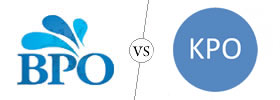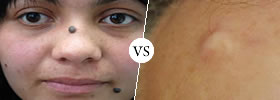Difference between Borderline and Bipolar
Key Difference: Bipolar and Borderline Personality Disorder (BPD) are often confused as the other because of their many similarities. Borderline Personality Disorder is a mental condition in which people experience reckless and impulsive behavior, unstable moods and relationships. Bipolar disorder is a condition in which people experience extensive mood swings. A person may start of being happy and then go quickly to becoming sad or depressed.
Bipolar and Borderline Personality Disorder (BPD) are often confused as the other because of their many similarities. These include extensive mood changes. A person suffering from either exhibits constant mood changes and may go from being extremely happy to extremely sad or extremely angry and then change the mood again in a few hours or so. Another similar behavior between bipolar and personality disorder is impulsive behavior. Both disorder cause people to active impulsively including reckless driving, risky sexual behavior, substance abuse, etc. Because of these similarities, bipolar and borderline personality is often hard to distinguish for a normal person. It requires a trained medical practitioner that will put the patient through a series of questionnaire and tests to determine the type of disorder the patient is suffering.

Borderline Personality Disorder is a mental condition in which people experience reckless and impulsive behavior, unstable moods and relationships. The disorder was not considered as a medical condition until the 1980s, when the Diagnostic and Statistical Manual for Mental Disorders, Third Edition (DSM-III) listed this condition as a medical diagnosable illness. BPD patients usually suffer brief psychotic mood swings that often change in minutes or hours. Experts state that people suffering from BPD also often suffer from other mental disorders such as depression, anxiety disorders, substance abuse, eating disorder, suicidal behaviors, etc. The overlapping of these disorders makes it difficult to properly diagnose and treat the disease.
According to research, BPD is known to occur three times more in women than in men. In women, the disorder is believed to co-occur with depression, anxiety and eating disorders. In men, it co-occurs with substance abuse and personality disorder. The disorder usually begins at a young age during adolescence or early childhood. Some childhood experiences have also been known to cause or trigger the disorder. Causes for the disorder include history of childhood trauma, brain abnormalities, genetic predisposition, neurobiological factors, environmental factors, executive function, family environment, self-complexity and thought suppression.
According to the DSM Fourth Edition, for a person to be diagnosed with BPD, they must exhibit at least five of the following symptoms: Extreme reactions of panic, depression, rage, etc., intense and stormy relationships, unstable self-image, impulsive and reckless behavior, suicidal tendencies, self-harming behavior, feelings of emptiness, uncontrollable anger and rage, paranoia, losing touch with reality, etc.
BPD has been unofficially divided into four subtypes by American psychologist, Theodore Million. He proposes that an individual diagnosed with the disorder can be classified into one oof the four categories depending on their symptoms. Wikipedia lists the four subtypes as:
- Discouraged borderline — including avoidant, depressive or dependent features
- Impulsive borderline – including histrionic or antisocial features
- Petulant borderline – including negativistic (passive-aggressive) features
- Self-destructive borderline – including depressive or masochistic features
Psychotherapy has been a proven to help treat patients with BPD. It has shown to help relieve some symptoms. Different types of therapy that are used include cognitive behavioral therapy, dialectical behavior therapy, and schema-focused therapy. Cognitive behavioral therapy (CBT) helps people identify and change core beliefs and behaviors that the patient may have about themselves along with addressing mood, anxiety problems and suicidal behaviors. Dialectical behavior therapy (DBT) focuses on helping the patient being aware and attentive to the present situation and allowing them to control and take charge of their emotions. Schema-focused therapy combines CBT with other forms of therapy and focuses on altering the way the patient views themselves. Medications are also used along with psychotherapy to relieve certain symptoms. Other treatments that have shown positive effect includes an omega-3 healthy diet for women.
 Bipolar disorder is a condition in which people experience extensive mood swings. A person may start of being happy and then go quickly to becoming sad or depressed. These mood swings are very fast and can happen in a couple of minutes. Bipolar disorder is equally common in men and women between the ages of 15-25 and there is no exact reason for the cause of this disorder, though it has been attributed to life changing situations, medications, lack of sleep and recreational drug use.
Bipolar disorder is a condition in which people experience extensive mood swings. A person may start of being happy and then go quickly to becoming sad or depressed. These mood swings are very fast and can happen in a couple of minutes. Bipolar disorder is equally common in men and women between the ages of 15-25 and there is no exact reason for the cause of this disorder, though it has been attributed to life changing situations, medications, lack of sleep and recreational drug use.
There are three types of bipolar disorder: Bipolar Disorder type I, Bipolar Disorder type II and cyclothymia. Bipolar type I is a disorder where people at least one manic episode and periods of major depression. This type of disorder was previously known as maniac depression. Type II have never suffered a full mania, however they experience high energy levels and impulsiveness, causing to be happy and really excited (known as hypomania) at one time and sad and depressed a little while later. Cyclothymia is a mild form of bipolar disorder in which a person only experiences small mood swings which are not that dangerous. People with this form alternate between hypomania and mild depression.
The symptoms for bipolar disorder may last from minutes to days to months and include easy distraction, feeling of sleeplessness, poor judgment, loss of temper, reckless behavior or lack of self control (drug use, dangerous behavior, reckless driving, etc), very elevated mood (hyperactive nature, increased energy, etc), very involved in activities, easily upset or agitated, loss of appetite, fatigue or lack of energy, difficulty concentrating, loss of pleasure in activities, low self-esteem, suicidal thoughts, etc. These symptoms take more prominence in bipolar disorder type I and are present with a lesser intensity in the type II. CBT, parental anxiety management, hypnotherapy treatments, herbal treatments, caffeine elimination and combined treatments are few treatments that have been proving effective in treating bipolar disorders.
|
|
Borderline |
Bipolar |
|
Definition |
Borderline personality disorder is a condition during which a person exhibits unstable moods, behavior and relationships. They are also associated with reckless behavior and suicidal tendencies. |
Bipolar is a psychotic disorder during which the patient exhibits excessive mood swings such as mania and depression. |
|
Symptoms |
Extreme reactions, intense relationships, impulsive decisions and behavior, suicidal tendencies, extensive mood swings, feelings of emptiness, intensive and uncontrollable anger. |
Symptoms differ depending on the person. However, constant and excessive mood swings are associated with bipolar. |
|
Causes |
History of childhood trauma, brain abnormalities, genetic predisposition, neurobiological factors, environmental factors, executive function, family environment, self-complexity and thought suppression |
Bipolar disorder has been attributed to genetics, physiological and environmental factors. |
|
Types |
BPD has been unofficially been divided into four types by Theodore Million: Discouraged borderline, Impulsive borderline, Petulant borderline and Self-destructive borderline. |
Bipolar I disorder, Bipolar II disorder, Cyclothymia and Bipolar disorder NOS. |
|
Treatment |
Psychotherapy, Medications, mental health services. |
CBT, parental anxiety management, hypnotherapy treatments, herbal treatments, caffeine elimination and combined treatments. |
Image Courtesy: x-centricmodels.com, bipolar-living.blogspot.com









Add new comment